

- Home
- Companies
- Edinburgh Instruments - TECHCOMP Group
- Applications
- Lanthanide-Based Up-Conversion ...
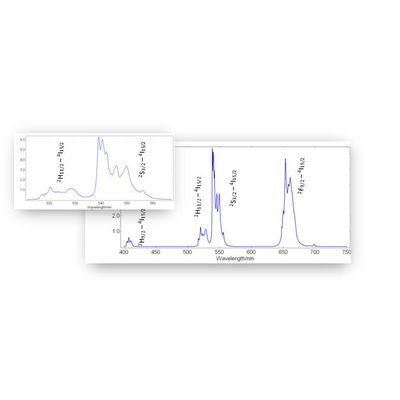
Lanthanide-Based Up-Conversion Materials - Energy
In this application note the FS5 Spectrofluorometer equipped with 980 nm laser and a PM-1 pulse modulator box is used to acquire the spectral and lifetime properties of a lanthanide-based upconversion material.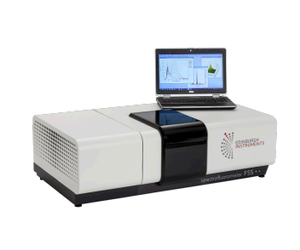
Lanthanide-based up-conversion materials present unique optical properties for applications ranging from biological imaging to data storage to solid-state lighting. They possess the ability to generate ultraviolet to near-infrared (UV-NIR) emissions from lower energy excitation through non-linear multi-photon events. Inorganic crystals, such as Y2O3, NaYF4, and LaF3, can be doped with single or multiple lanthanide ions, which under infrared laser excitation produce UV-NIR up-converted emission.
Typically, up-converted UV-NIR emissions are generated from 980 nm laser excitation of Yb ions, where subsequent f-block energy transfers and electron-phonon coupling
within the crystal to other lanthanides, such as Er, Ho, or Tm, to produce higher energy, emissive f-block states. Since the emitted spectrum and associated lifetimes are a function of the crystal composition, the lanthanide ions present, the laser excitation density, and the phase (solution/solid/film), a highly sensitive, precise instrument is needed to appropriately record accurate and reproducible data.
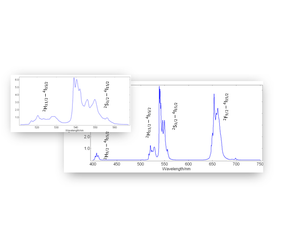
The spectral and lifetime properties of up-conversion materials can easily be measured on a standard configuration Edinburgh Instruments’ FS5 fluorometer, equipped with a 980 nm laser operating in both continuous-wave and pulsed mode. For lifetime measurements, the laser signal is pulsed by specially designed modulator box, the PM-1, which
further facilitates control of the laser temporal pulse-width by the end user, varying from 3μs to 350μs. The recording of fluorescence decays is done in Multichannel Scaling mode (MCS) with the standard, integrated electronics.
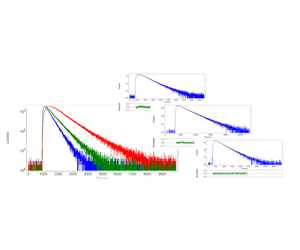
Spectral and lifetime measurements were performed for a commercially available bulk-phase green and red upconversion phosphor, NaY0.77Yb0.20Er0.03F4 (Sigma-Aldrich). The powder was placed in demountable quartz cuvette utilized in the Front-Face Holder (SC-10) for cuvettes, powders and films.
The time-resolved decay curves of up-conversion luminescence materials are useful to help distinguish between excited state absorption (ESA) and energy transfer up-conversion (ETU) processes, as well as associated rates and efficiencies of the up-conversion mechanisms. ESA processes take place instantly during the excitation pulse
within a single ion, while ETU can persist after the pulse for a longer period of time related to the lifetime of the f-block level providing the energy transfer, the accepting f-block energy level, and the rate of electron-phonon coupling through the crystal between lanthanide ions. Therefore, the ESA up-conversion exhibits an exponential behaviour similar to that by direct excitation, while the ETU decay kinetics typically exhibit a clear rise time and a non-exponential behaviour.
Figure 3 displays the emissive lifetimes of NaY0.77Yb0.20Er0.03F4 under 980 nm pulsed excitation at the 408 nm (2H9/2 – 4I15/2), 54 nm (4S3/2 –4I15/2), and 654 nm (4F9/2 –4I15/2 ) emission bands of Er, that are summarized in Table 1 below. All three lifetime curves showed an initial rise followed by a decay, with the highest energy state exhibiting the fastest rate of rise and decay and the lowest energy state displaying the slowest kinetics; this is evident due to multiple back-energy and cross relaxation processes that give rise to lower energy states having longer lifetimes than higher energy states, also confirming that the ETU process is favoured based on the
microsecond rise times.
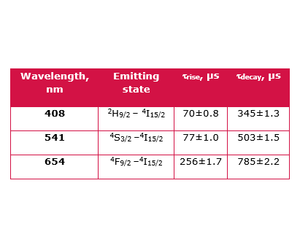
The FS5 Spectrofluorometer, equipped with 980 nm laser and a PM-1 pulse modulator box, provides a compact, straightforward, precise and reliable tool that is easy to operate for the acquisition of spectral and lifetime properties of lanthanide-based up-conversion materials.
